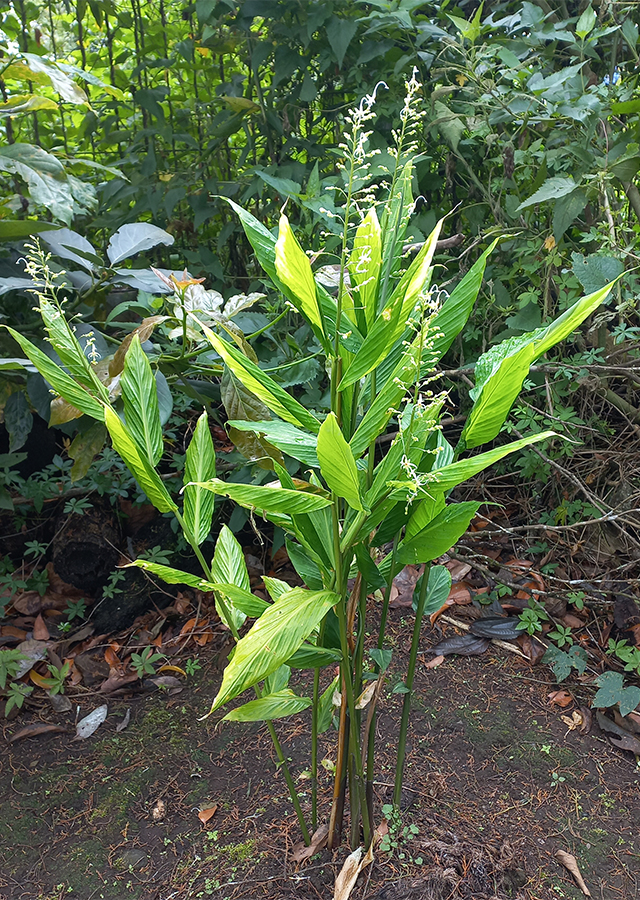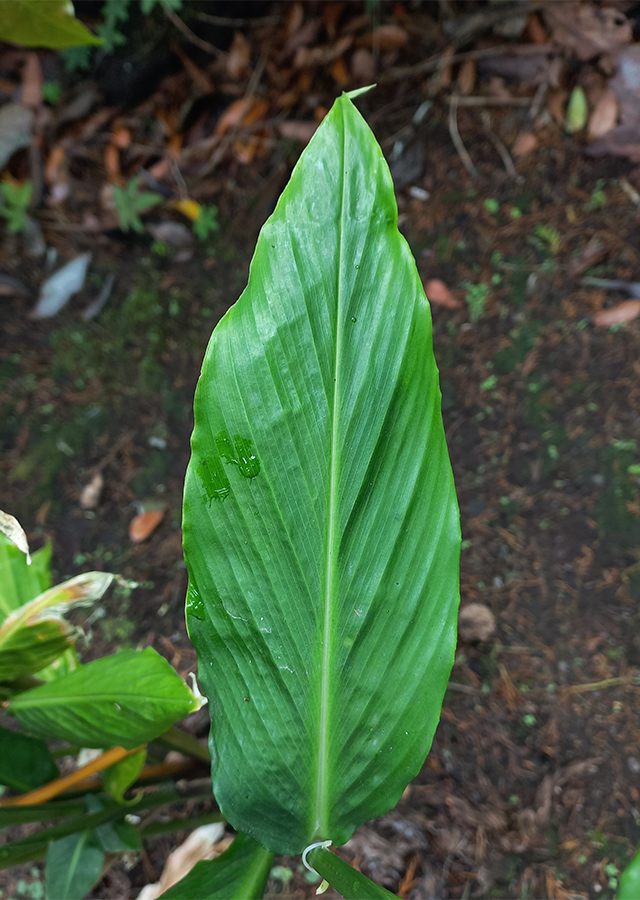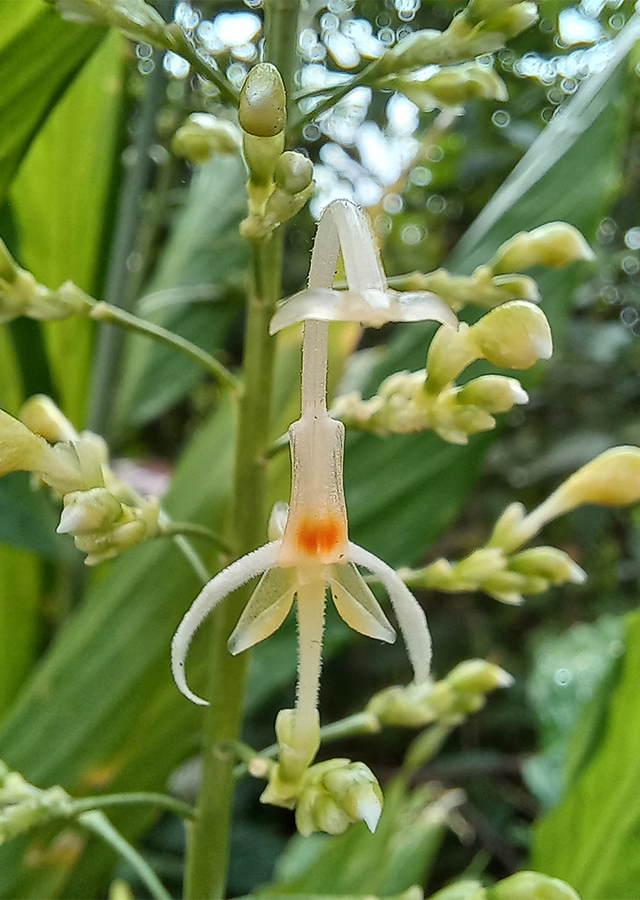Globba campsophylla
Globba campsophylla K.Schum.
Zingiberaceae
Location in our garden
Principal



Synonym
Globba merrilli Ridl.
Habitus
Herbaceous. Herbaceous plant with a height of 45-70 m
Part Used
Leaves
Rhizome
Growing Requirements
Need Shade
Habitat
Forest
Terrestrial
Overview
G. campsophylla is one of the endemic plants of the Zingiberaceae family, originating from the Philippines. This small clump species is known as a medicinal plant. Where, G. campsophylla is believed by local people to have good health benefits, and has been used to treat various complaints, including curing coughs and colds. In addition, the unique flower shape makes this plant widely grown as an ornamental plant.
Vernacular Names
No found data on this. Need further research.
Agroecology
Habitat of G. campsophylla is terrestrial in a shady dipterocarp forest area with a humid environment. It is an understorey with grasses and Araceae species. This species is also found growing mostly near rivers at an altitude between 1,300 to 1,400 m above sea level.
Morphology
- Rhizomes - short, creeping, fleshy and tufted with fleshy roots up to 1 – 2 cm in diameter.
- Stems - 3-4 leafy stems.
- Leaves - lanceolate to elliptical to ovoid, glabrous, sessile, 23-30 cm long, 5-7 cm wide. The tip or top of the leaf is tapered (acuminate) to cuspidate, the base or base of the leaf is round, the adaxial surface is light green to dark green, the abaxial surface is whitish, the leaf edge is flat. The leaf sheath is green towards the apex and red to maroon towards the base of the leaf.
- Flowers - has a triangular, 2 lobed flower lip (labellum). Bracts and bracteoles are white, caducous (deciduous or deciduous). Petals (calyx) white to bright green, tubular, 3 ends/toothed. Long, curved filaments, white labellum with yellow stripe partially fused with tube flowers and lateral staminodes attached below. The stamens are slender with cream-yellow anthers and have no spurs. Ovaries (future fruit) round, ovoid, smooth. Has terminal inflorescences.
- Fruits - capsule, round to oval in shape, grooved, greenish in color, smooth surface, about 1 - 1.3 cm long.
Cultivation
Propagated by rhizomes.
Chemical Constituents
No found data on this. Need further research.
Traditional Medicinal Uses
- Cure fever, cough and cold.
Part Used
Reference Sources
- Royal Botanic Gardens, Kew. Plants of the World Online: Globba campsophylla K.Schum. https://powo.science.kew.org/taxon/urn:lsid:ipni.org:names:796712-1. 24-07-22.
- Acma F.M., Mendez N.P. 2018. Noteworthy records of Philippine endemic gingers (Zingiberaceae) in the buffer zone of Mt. Hamiguitan Range Wildlife Sanctuary, Davao Oriental, Philippines. Environmental and Experimental Biology, 16: 111–115. https://doi.org/10.22364/eeb.16.10.
- Naïve M.A.K. 2017. Zingiberaceae of Kalatungan Mountain Range, Bukidnon, Philippines. Bioscience Discovery, 8(3): 311-319.

